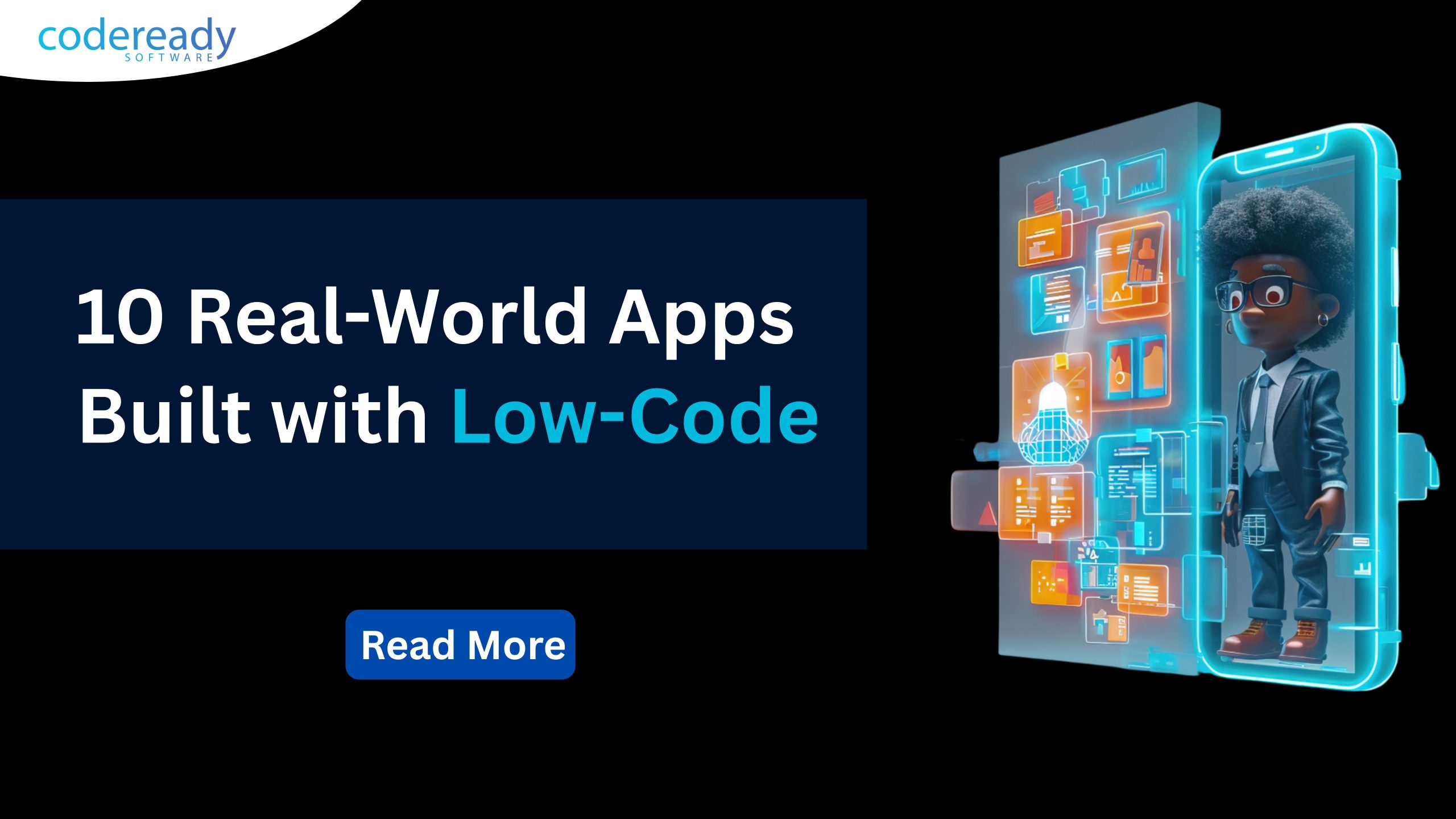Introduction: Why Low-Code Apps Are Taking Over
Applications would take months, or even years to build. Businesses in the modern world do not have such a luxury. Startups require MVPs in a short time, firms require the modernization of old systems, and SMBs require cheap digital solutions. Apps built with low-code platforms are the answer, enabling anyone from product managers to IT leaders to launch scalable apps with minimal coding.
In this blog, we’ll explore 10 real-world apps built with low-code that prove its impact across industries like fintech, healthcare, retail, education, and logistics.
1. Fintech – Digital Payment Dashboard
Low-code software systems enable financial innovators to create secure real time payment dashboards to monitor operations, customer activity and incorporate compliance (KYC/AML).
Why it works: Rapid integration with APIs and banking systems.
Example use case: A lending app gets its loan approval automatized using a low-code dashboard.
2. Healthcare – Patient Portal
Low-code patient portals are used by healthcare providers to make appointments, reports, and telemedicine.
Why it works: HIPAA-compliant, integrated EHR.
Example use case: Clinics enhance patient engagement and minimize the overhead of the administration.
3. Retail – Inventory Management System
Retailers usually have problems with old spread sheets. A low-code inventory application manages inventory, automates notifications, and is connected to POS.
Why it works: Real-time visibility + scalability.
Example use case: An online shop can cut stockouts by 40 percent.
4. Education – Learning Management System (LMS)
Online classes, student tracking, and course content delivery LMS apps with low-code are implemented in schools and training companies.
Why it works: Accelerated adoption of hybrid/remote education.
Example use case: An education technology company releases an LMS within weeks, not months.
- Logistics – Fleet Tracking App
Low-code allows logistics companies to develop fleet tracking apps using GPS, delivery history, and live updates on drivers.
Why it works: Optimization of routes, cost reduction.
Example use case: A logistics company reduces the 25% of delivery delays.
6. HR – Employee Onboarding App
The HR teams develop onboarding applications to make the establishment, training, and compliance of new employees easier.
Reason: No IT bottleneck, better employee experience.
Example use case: SMBs automate the process of recruiting at various locations.
7. Sales – CRM Lite
Salesforce is not required by all the businesses. A CRM application created in a low-code should assist SMBs to handle the leads, deal tracker, and integration with email/WhatsApp.
Why it works: Low cost + personalized.
Example use case: Startups monitor the customer pipeline without costly SaaS.
8. Customer Service – Chatbot & Helpdesk
It is easy to deploy AI-enabled chatbots or helpdesk applications with low-code.
Why it works: Enhances customer response in 24/7.
Example use case: An online shop automatizes the answers to the frequently asked questions and minimizes call volumes.
9. Marketing – Campaign Tracking Dashboard
The marketers develop the campaign tracking dashboard to track multi-channel campaigns (Google Ads, Meta Ads, Email).
Why it works: Single perspective of the marketing performance.
Example use case: SMBs calculate ROI real-time and are not IT-dependent.
10. Manufacturing – Workflow Automation App
Production tracking, quality control, and reporting Workflow automation apps are built using factories.
Why it works: Less manual error,makes it more efficient.
Example use case: A manufacturer will also save 15% of expenses by automating manual logs.
Quick Comparison: Low-Code Apps by Industry
| Industry | App Example | Key Benefit |
| Fintech | Payment Dashboard | Real-time transactions, compliance |
| Healthcare | Patient Portal | Engagement + EHR integration |
| Retail | Inventory Management | Prevents stockouts |
| Education | LMS | Rapid remote learning deployment |
| Logistics | Fleet Tracking | Route optimization, cost savings |
| HR | Onboarding App | Smooth hiring process |
| Sales | CRM Lite | Affordable lead management |
| Customer Service | Chatbot/Helpdesk | 24/7 support |
| Marketing | Campaign Dashboard | ROI tracking |
| Manufacturing | Workflow Automation | Improved efficiency |
FAQ – Voice-Search Friendly
Q1. What apps can be built with low-code?
Low-code can build apps for fintech, healthcare, HR, CRM, retail, education, logistics, and more.
Q2. Are low-code apps scalable for enterprises?
Yes. Enterprises use low-code to modernize legacy systems and scale departmental apps securely.
Q3. Can startups build MVPs with low-code?
Absolutely. Founders use low-code for MVPs, reducing development time by up to 70%.
Q4. Is low-code secure for financial or healthcare apps?
Yes, leading platforms meet compliance standards like GDPR, HIPAA, and PCI DSS.
Q5. How much faster is low-code compared to traditional coding?
On average, low-code delivers apps 3–5x faster than traditional development.
Conclusion: Build Your Next App with Low-Code
From fintech dashboards to LMS platforms, the examples above prove that apps built with low-code are not just prototypes — they are production-ready, scalable, and cost-efficient.
We assist startups, SMBs, and enterprises to convert ideas into apps in weeks and not months, at CodeReady Software. You may require a patient portal or CRM or automation, but whatever you require, our specialists can create it using low-code.
Ready to launch your app? Book a free consultation with CodeReady today.

